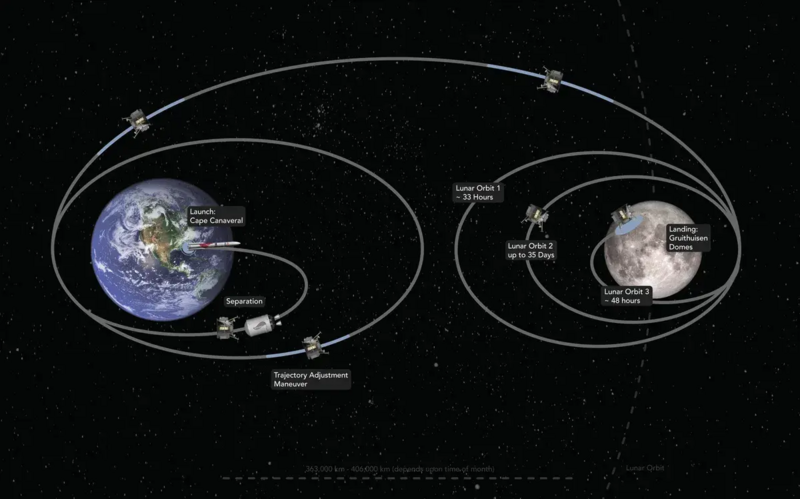Space, a market estimated to be worth $1.3 trillion by 2030, is getting pretty crowded with companies trying to snag a piece of the galactic money pie.
Driving the news: On Monday, Peregrine mission one — named after the world’s fastest animal — will launch from Cape Canaveral in Florida and head toward the lunar surface. If successful, it would become the first U.S. lander on the moon since NASA’s Apollo program.
- Though Russia was first, China and India also made it to the moon in the over 50 years since Apollo’s last crewed landing. Japan will try to land in just two weeks.
- But this would be the first-ever moon landing pulled off by a private company, made possible by billions in new financing as the costs of going to space keep going down.
- The mission, led by Pittsburgh-based Astrobotic, is racing against Houston-based Intuitive Machines, which will launch a lander next month but chose a faster route.
Why it matters: These trips will lay the groundwork for getting humans back into space and further developing the commercial space market. In this case, NASA is sending up a rover with the aim of finding water molecules as a potential resource for future space missions.
- Peregrine is the first in a wave of missions to fly under a new NASA scheme, in which the agency pays private firms to deliver scientific equipment to the moon.
- Also on board will be a copy of Wikipedia, a coin loaded with Bitcoin, a lump of Mount Everest, and more controversially, the ashes of Star Trek creator Gene Roddenberry.
Yes, but: Landing on the moon without smashing your lander into smithereens is made difficult by the lack of atmosphere to slow spacecraft as they navigate through cliffs and craters. Past missions from Japan and Israel have ended up as space junk for this reason.
- Even unsuccessful missions have led to several Earth-level innovations that are now a fixture of daily life, from phone cameras to memory foam to cordless power tools.
Big picture: If all goes well, Peregrine will gather important moon data and set the tone for space travel in 2024. Meanwhile, NASA is continuing to work with Elon Musk’s SpaceX to bring crews to the space station as it gears up for a moon mission scheduled for 2025.—SB
